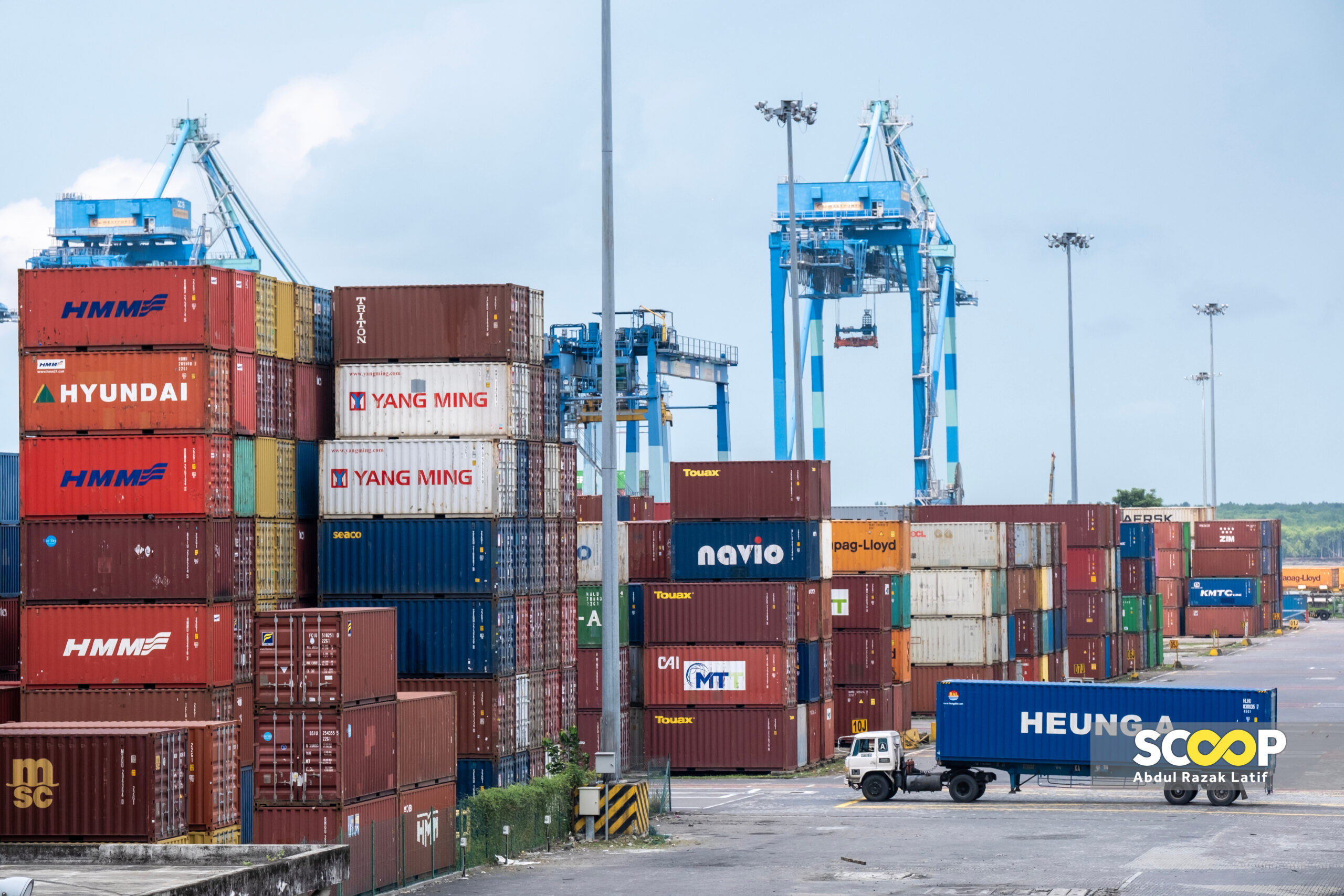GEORGE TOWN — Putrajaya must take the lead in developing trade adaptation toolkits for exporters and small-and-medium enterprises (SMEs) to navigate the uncertainties of US tariffs, rather than leave the respective states to develop their own, a SME group said.
This is to avoid confusion and allow a uniformed approach for local industries to deal with the levies imposed by US President Donald Trump’s administration, said Chin Chee Seong, president of the SME Association of Malaysia.
“If (all) state governments come up with (their own), then it will be very confusing (for SMEs) as some industries in Selangor may not be in Penang, and vice versa. Then we would have to refer to both the state and federal governments,” he told Scoop.
“If the government can get all the states together and come up with a standard toolkit for all Malaysian industries (to follow), regardless of business categories, then it makes sense.”
The US government has slapped a 10% base tariff on its trading partners and also separate tariff rates – with Malaysia’s at 24% – on different countries, subject to trade negotiations during a current 90-day pause. There are also other tariffs – targeting China and its companies doing offshore manufacturing in other countries – on items such as solar panels.
Chin was asked by Scoop whether other state governments should emulate Penang in developing their own trade adaptation toolkits to help SMEs in their respective states navigate the US tariffs.
The Penang government on April 11 announced the trade adaptation toolkit as one of two major initiatives to shield its economy and safeguard its export-reliant sectors in the new economic climate upended by Trump’s tariffs.
Chief Minister Chow Kon Yeow announced a Penang Tariff Monitoring Taskforce to facilitate collaboration with the Investment, Trade and Industry Ministry and the Malaysian Investment Development Authority (MIDA), and to develop the toolkit with Putrajaya to address supply chain issues, exploration of alternative markets, existing regional trade frameworks, compliance requirements, and origin restructuring.
Selangor Menteri Besar Datuk Amirudin Shari also said on April 7 the state would seek expert advice on follow-up measures to protect the interests of industry players in the states in dealing with the impact of the US tariff.
Putrajaya, meanwhile, is to outline the steps taken by the government in dealing with the 24% tariff imposed on Malaysia at a special Dewan Rakyat sitting on May 5.
Tariff confusion an opportunity
Datuk William Ng, president of the Small and Medium Enterprises Association Malaysia (Samenta), meanwhile, said the toolkit should also address access to non-traditional markets.
Ng said that Penang should not just focus on the negative impacts of Trump’s tariff, but instead seize the opportunity in assessing how it can benefit from the policy.
He also said that this situation could be a “once in a lifetime opportunity” for Malaysia to showcase our manufacturing and supply chain prowess.
“The government should lead in incentivising supply chain clusters, not just in the electrical and engineering (E&E) sector – but also in plastics, metalworking, rubber products, chemical products and food production.
“We don’t have to do all these overnight, but aim for transformation over the next 12 to 18 months,” he added.
The US was Penang’s second-largest export destination last year, accounting for 17% of the state’s total exports. China was first with RM80 billion (18%), followed by Singapore at RM67 billion (15%).
E&E products made up RM80 billion (40%) of Malaysia’s total RM199 billion exports to the US in 2024, with semiconductors alone accounting for RM40 billion (20%).
What to do in the meantime
Pending the trade adaptation toolkit, Ng said SMEs still need to plan, as difficult as it is given the uncertainty surrounding Trump’s tariff policy.
He advised SMEs not to assume the levies will be rolled back, increased or decreased following the current pause.
The temptation may be to sit back and adopt a wait-and-see approach, even as SMES put their expansion plans on hold.
“Businesses should diversify sooner for their source of materials as well as their client base – to de-risk themselves from such market-specific volatility,” Ng said.
Chin, meanwhile, called for financial planning by SMEs now in anticipation of cash flow issues should the US be hit by tariff-triggered inflation, or even a recession, thereby shrinking demand for products.
“It (tariffs)…will affect us in terms of volume (of goods produced). This is because if the prices of goods increase, there will be less orders.
“Orders will be less but (financial) commitments remain the same, such as factory costs. So, regardless of whether we have profit or not, we would still be suffering on the revenue, and that is where we are more worried about.
“Coupled with our government (policies) this year (such as petrol subsidy rationalisation), it will increase so much cost for us. That is where we will definitely face a serious problem if we don’t manage our funds properly,” Chin said.
He also anticipates that the US tariffs could impact SMEs’ operations in the next six months or a year down the road.
Exports by local SMEs to the US account for less than 10% of overall exports and involve mostly furniture and food products, he added – April 28, 2025


